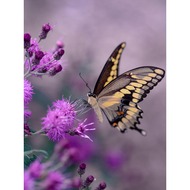
(View Complete Item Description)
Portland Public Schools has developed this unit. Their hope is that ALL K-5 students will be able to access rigorous, standards-aligned science instruction that engages them in hands-on experiences and sense-making through student discourse. They want to encourage all students to be critical thinkers and lifelong learners. To that end, the science and ESL departments at Portland Public Schools, in consultation with NGSS writer Rita Januszyk, have developed units that are aligned with both Next Generation Science Standards and Oregon’s English Language Proficiency standards.
In this unit, students investigate how to protect a passenger in a mock car crash. Students learn about forces, including magnetic forces, and how they interact with objects. Students engineer a solution to protect a play-dough model based on what they have learned. Language focus is on describing movement, patterns, and supporting claims with evidence.
Material Type:
Activity/Lab,
Lesson
Authors:
Geoff Stonecipher,
Jamie Rumage,
Jennifer Mayo,
Jennifer Scherzinger,
Kate Yocum,
Rita Januszkyk,
Susan Holveck



















